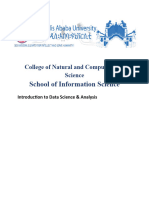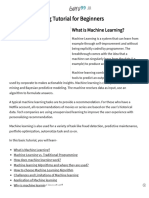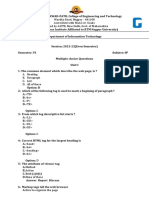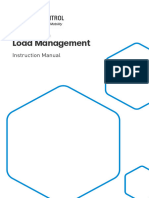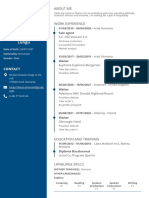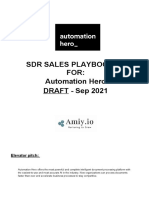0% found this document useful (0 votes)
16 views5 pagesModule 1
Machine learning is a computer science field that enables systems to learn from data without explicit programming, characterized by data-driven automation and continuous improvement. It has diverse applications across industries, such as healthcare for disease diagnosis, finance for fraud detection, and e-commerce for personalized recommendations. The machine learning process involves defining a problem, collecting and preprocessing data, selecting and training a model, evaluating its performance, and deploying it for real-world use.
Uploaded by
gohodoh495Copyright
© © All Rights Reserved
We take content rights seriously. If you suspect this is your content, claim it here.
Available Formats
Download as PDF, TXT or read online on Scribd
0% found this document useful (0 votes)
16 views5 pagesModule 1
Machine learning is a computer science field that enables systems to learn from data without explicit programming, characterized by data-driven automation and continuous improvement. It has diverse applications across industries, such as healthcare for disease diagnosis, finance for fraud detection, and e-commerce for personalized recommendations. The machine learning process involves defining a problem, collecting and preprocessing data, selecting and training a model, evaluating its performance, and deploying it for real-world use.
Uploaded by
gohodoh495Copyright
© © All Rights Reserved
We take content rights seriously. If you suspect this is your content, claim it here.
Available Formats
Download as PDF, TXT or read online on Scribd
/ 5





















































